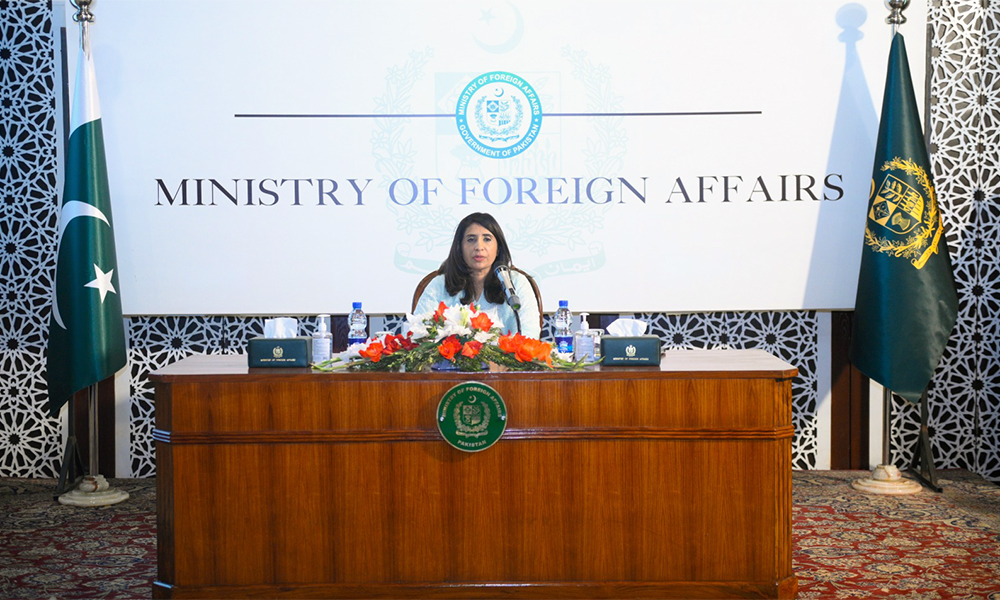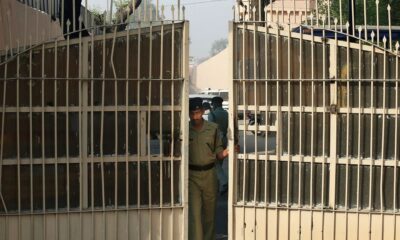Latest News
World Bank board backs using $1 billion in frozen Afghan funds for aid

The executive board of the World Bank on Tuesday approved a plan to use more than $1 billion from a frozen Afghanistan trust fund to finance urgently needed education, agriculture, health and family programs, the bank announced.
The plan, which will bypass sanctioned Islamic Emirate of Afghanistan (IEA) authorities by disbursing the money through U.N. agencies and international aid groups, will provide a major boost to efforts to ease the country's worsening humanitarian and economic crises, Reuters reported.
The approach "aims to support the delivery of essential basic services, protect vulnerable Afghans, help preserve human capital and key economic and social services, and reduce the need for humanitarian assistance in the future," the bank said in a statement.
Afghanistan Reconstruction Trust Fund (ARTF) was frozen in August when the IEA overran Kabul as the last U.S.-led international troops departed after 20 years of war.
According to the report foreign governments ended financial aid constituting more than 70% of government expenditures while the United States led in the freezing of some $9 billion in Afghan central bank funds.
The funding cuts accelerated an economic collapse, fueling a cash crunch and deepening a humanitarian crisis that the United Nations says has pushed more than half of Afghanistan's population of 39 million to the verge of starvation, read the report.
The World Bank statement said that as a first step, ARTF donors will decide on four projects worth about $600 million that will support "urgent needs in education, heath and agricultural sectors, as well as community livelihoods."
There will be a "strong focus on ensuring that girls and women participate and benefit from the support," the statement continued.
Latest News
Pakistan confirms airstrikes in Afghanistan
Stating that protecting its citizens was Pakistan’s top priority, Baloch reiterated that there were “threats posed by terrorist elements to Pakistan and its citizens”.

Pakistan’s foreign ministry on Thursday confirmed that the country carried out airstrikes in Afghanistan on Tuesday night.
“Pakistan is united for its people. Pakistan conducted an operation in Afghanistan’s border areas,” Foreign Ministry spokesperson Mumtaz Zahra Baloch said, Dawn newspaper reported.
“The intelligence-based operation was conducted by Pakistan in Afghanistan’s border areas,” Baloch specified, adding that it was carried out “based on threats to the security of Pakistani citizens”.
However, the official stressed that Pakistan had “always prioritised dialogue in matters relating to ties with Afghanistan”.
“We respect Afghanistan’s integrity and sovereignty,” she asserted.
Baloch noted that Pakistan’s security forces and law enforcement agencies routinely conduct operations “against terrorist groups in the border areas”. “Preparations for these operations are made in an extremely careful manner,” she highlighted.
Stating that protecting its citizens was Pakistan’s top priority, Baloch reiterated that there were “threats posed by terrorist elements to Pakistan and its citizens”.
“Pakistan is committed to the security of its public,” Baloch said.
IEA summons Pakistan’s charge d’Affaires over deadly airstrikes
The Ministry of Foreign Affairs of the Islamic Emirate of Afghanistan (IEA) on Wednesday summoned the Charge d'Affaires of the Pakistani Embassy in Kabul, the ministry said in a statement.
The ministry handed over a "firm protest note" to the Pakistani diplomat, condemning the recent airstrikes by Pakistani forces in the Barmal district of Paktika province.
The note stressed that the protection of Afghanistan's territorial integrity is a "red line" for the Islamic Emirate and warned that such reckless actions would have serious and far-reaching consequences.
The Pakistani airstrikes, which took place late Tuesday night, resulted in 46 deaths and left six others injured in Barmal district.
Latest News
IEA says Afghans sacrifice everything in defense of their beliefs

Marking 45 years since the Soviet Union invaded Afghanistan in 1979, the Islamic Emirate said on Thursday that Afghans’ struggle demonstrates that they are deeply committed to their faith, value their freedom and independence, and are ready to sacrifice everything in defense of their beliefs.
“This invasion posed a severe threat to the religion, freedom, prosperity, and social security of the Afghan people,” IEA said in a statement.
It said that as a result of the Afghan people's “sacrifices, hardships, martyrdoms, and unwavering commitment, and with the help of Allah, the once-powerful Soviet forces suffered a humiliating defeat in Afghanistan and were forced to retreat after nine years.”
“Alhamdulillah (thanks Allah), the resilient Afghan nation did not remain silent in the face of this aggression. With unity, determination, and steadfast courage, they stood firm against the Soviet forces, sacrificing their lives, wealth, and everything they owned for the cause of jihad,” it added.
The Islamic Emirate also urged the future generations to “follow the path of their ancestors, defending their faith and homeland with courage, standing firm against any form of invasion and oppression.”
Latest News
Afghanistan and Zimbabwe to face off in test match starting December 26
Afghanistan’s recent tour of Zimbabwe saw the team claim victories in both the T20 and ODI series.

The national cricket teams of Afghanistan and Zimbabwe are set to begin their highly anticipated test match series on Thursday, December 26. The first of the two tests, taking place in Bulawayo, Zimbabwe, will run until December 30. The first ball is scheduled to be bowled at 12:30 PM Kabul time.
This test match adds another exciting chapter to the growing rivalry between the two nations. Afghanistan’s recent tour of Zimbabwe saw the team claim victories in both the T20 and ODI series, boosting their confidence as they transition into the longer format of the game.
The second test match will follow, beginning on January 2. Cricket enthusiasts can expect a thrilling contest as Afghanistan looks to continue its strong form, while Zimbabwe aims to challenge the visitors in the longest format of the game.
-

 Sport5 days ago
Sport5 days agoAfghanistan clinches ODI series victory against Zimbabwe
-

 Business4 days ago
Business4 days agoShoemaking industry in Takhar province facing stagnation
-

 Latest News4 days ago
Latest News4 days agoA new polio vaccination campaign is set to launch in Afghanistan
-

 Latest News4 days ago
Latest News4 days agoEight Afghan migrants die as boat capsizes off Greek island
-

 Latest News2 days ago
Latest News2 days agoOver 50 Afghan inmates freed from Pakistani prisons
-

 Latest News5 days ago
Latest News5 days agoG7 envoys urge national dialogue for lasting stability in Afghanistan
-

 Science & Technology4 days ago
Science & Technology4 days agoAlbania bans TikTok for a year after killing of teenager
-

 World4 days ago
World4 days agoMore than 30 dead in Brazil bus and truck collision
























